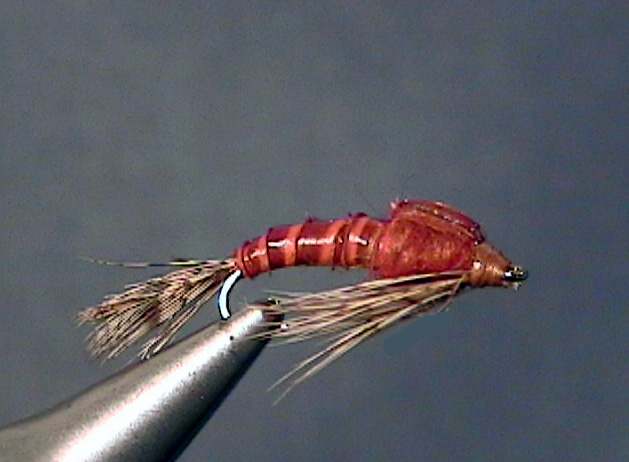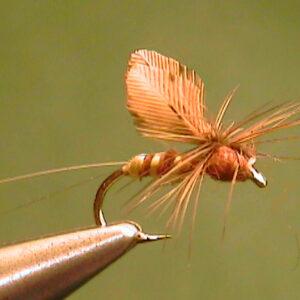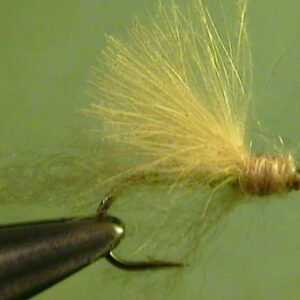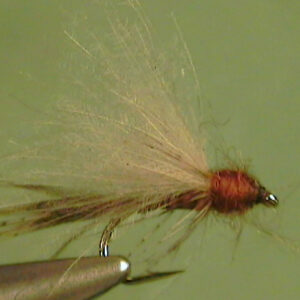Hook Size: 12/14
The Perfect Fly Western March Brown nymph is a trout fly that imitates the mayfly in the nymphal stage of life. Western March Brown nymphs are clinger nymphs. They stay under the crevice of rocks and crawl around on the bottom to feed or when they hatch and should be fished on or near the bottom during the hatch.
The Rhithrogena nymphs are classified as clingers. Sometimes imitations are
effective but this is usually only during the time when the nymphs are migrating
from the fast to slower moving water to emerge. Otherwise, most of the time the
nymphs are down between or under the rocks on the bottom of the stream. I
suggest starting a week or so before a hatch should actually start. After it starts,
continue to fish the nymph imitation during the times they are not coming off
Presentation:
You should fish them on the bottom in a dead-drift fashion using plenty of
weight. Concentrate on the pockets and seam edges of the faster moving water.
Bring the fly from the fast water into the seams and into the slower water
immediately adjacent to the fast water.
You need to make sure the fly stays on the bottom. The clinger nymphs don’t
drift through the currents. They crawl on the bottom to where they are going to
hatch. You can use a strike indicator if you must, but I think you are far better off
fishing the nymph imitation with weight added a few inches above the fly without
an indicator.
I usually cast up and across in the current seams and mend the line a couple of
quick times to help get it down on the bottom. Allow the fly to swing all the way
around to the down and across position bringing it out of the faster water towards
the slower water that they would go to in order to hatch. That would include
pockets behind boulders and rocks and along the banks.
Copyright 2013 James Marsh




